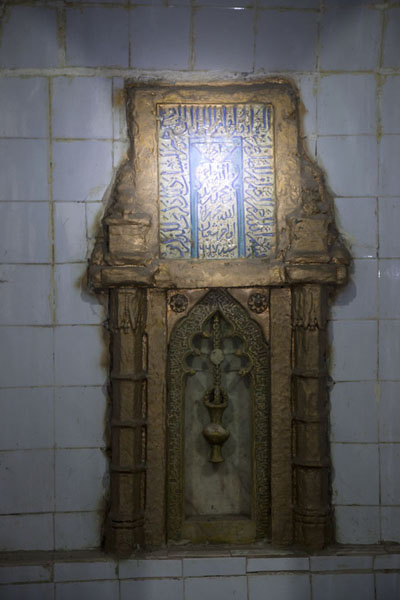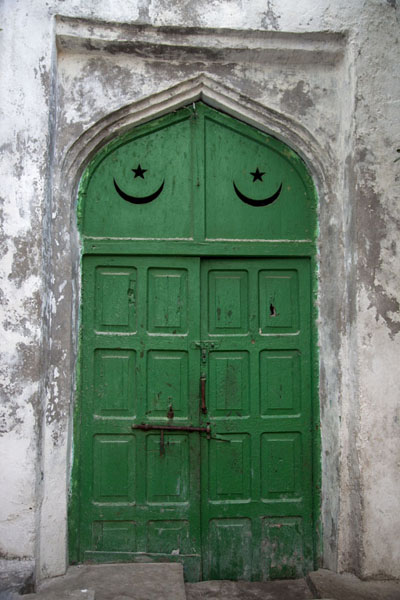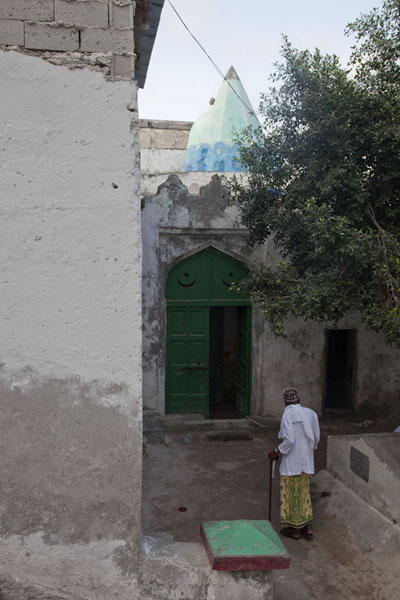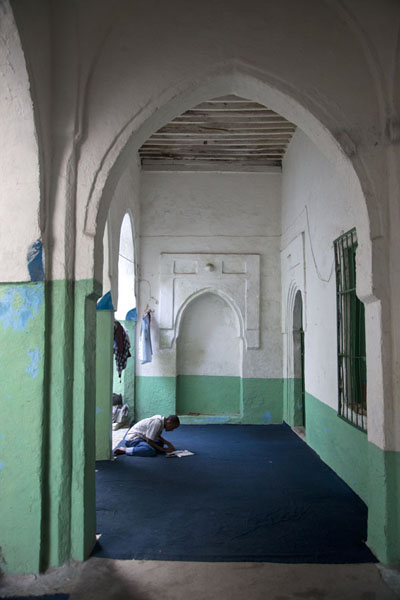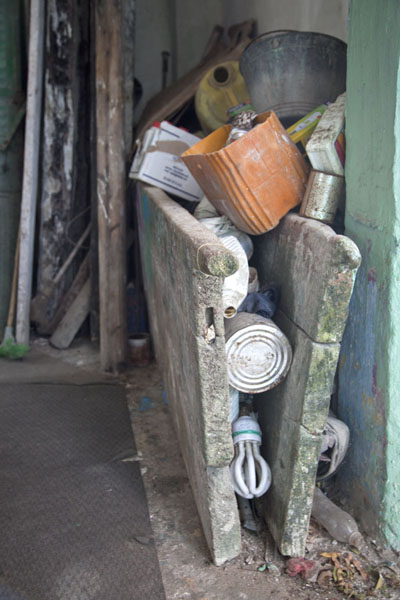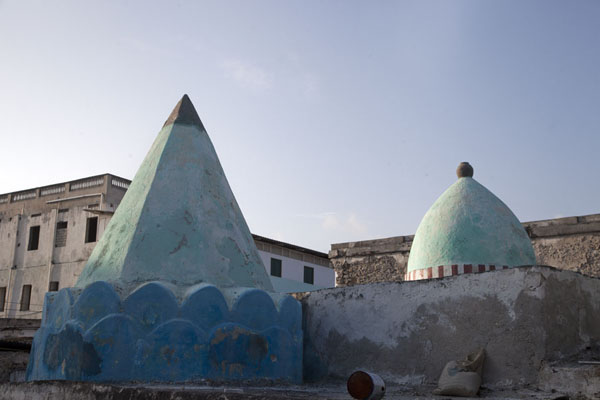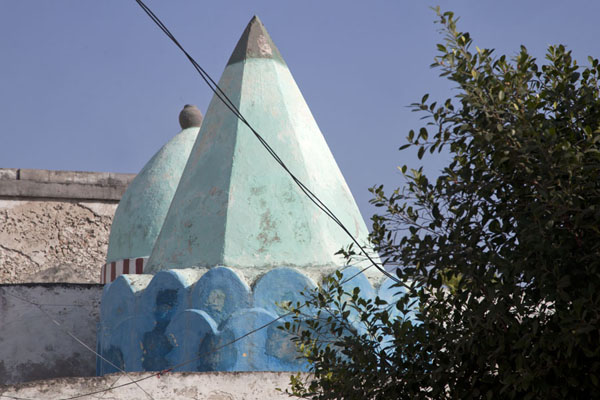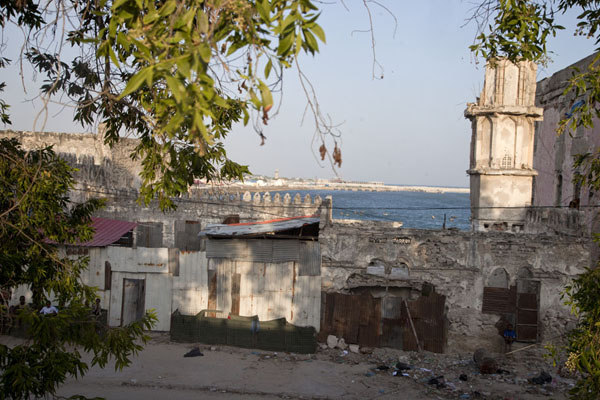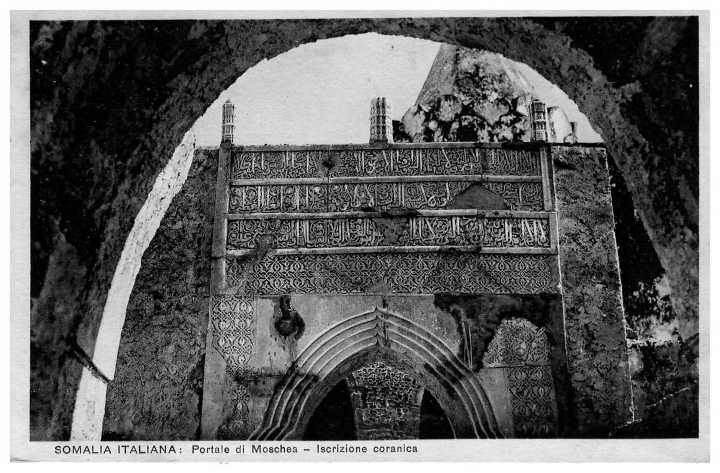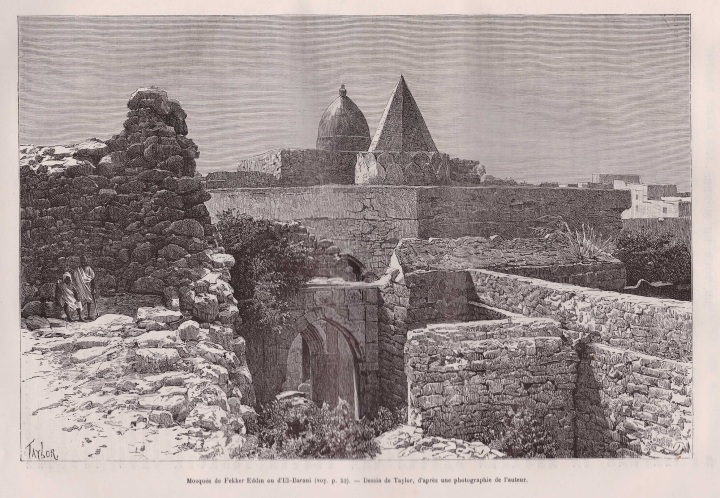
"The place where the students studied religion, the first university of Somalia, is the Great Mosque, regarded as one of the most ancient mosques in Mogadishu. Fakhr-el-Din. This Mosque in Mogadishu was built in 1269 (drawings from 1882 and 1933). De Vecchi, the Italian Governor of Somalia, built an asphalt road right through the mosque. After this demolition, which cut the mosque into two parts, the Fakr-el-Din mosque lost its importance."
"From “Voyage Chez Les Benadirs, Les Comalis et les Bayouns, par M.G. Revoil en 1882 et 1883”
Published in Le Tour du Monde. Noveau Journal des Voyages. XLIX, 1255 Liv, page 51"
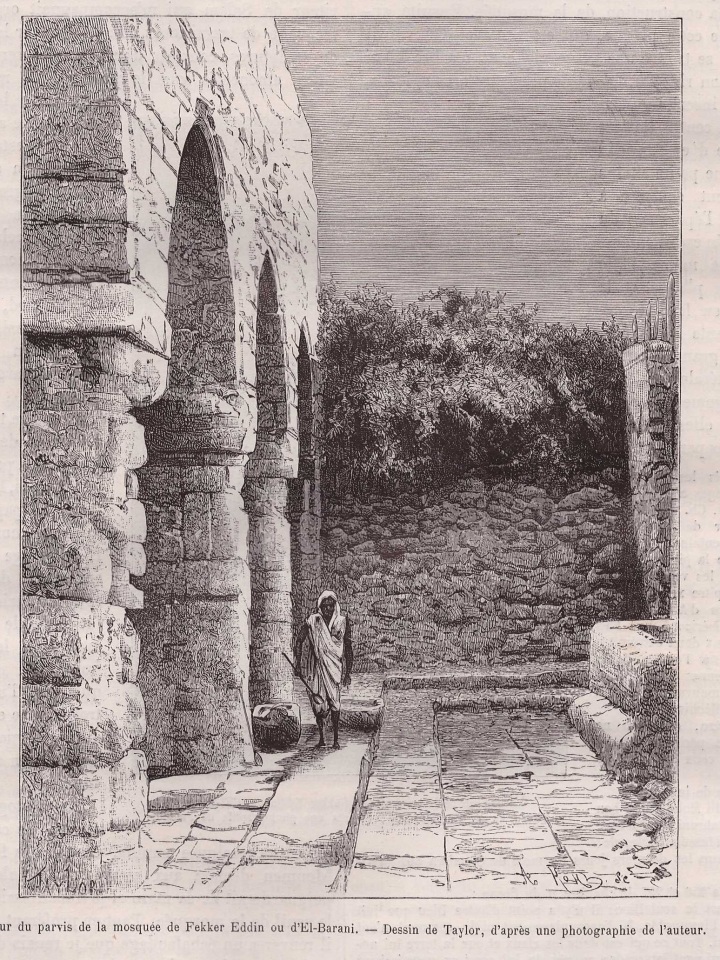
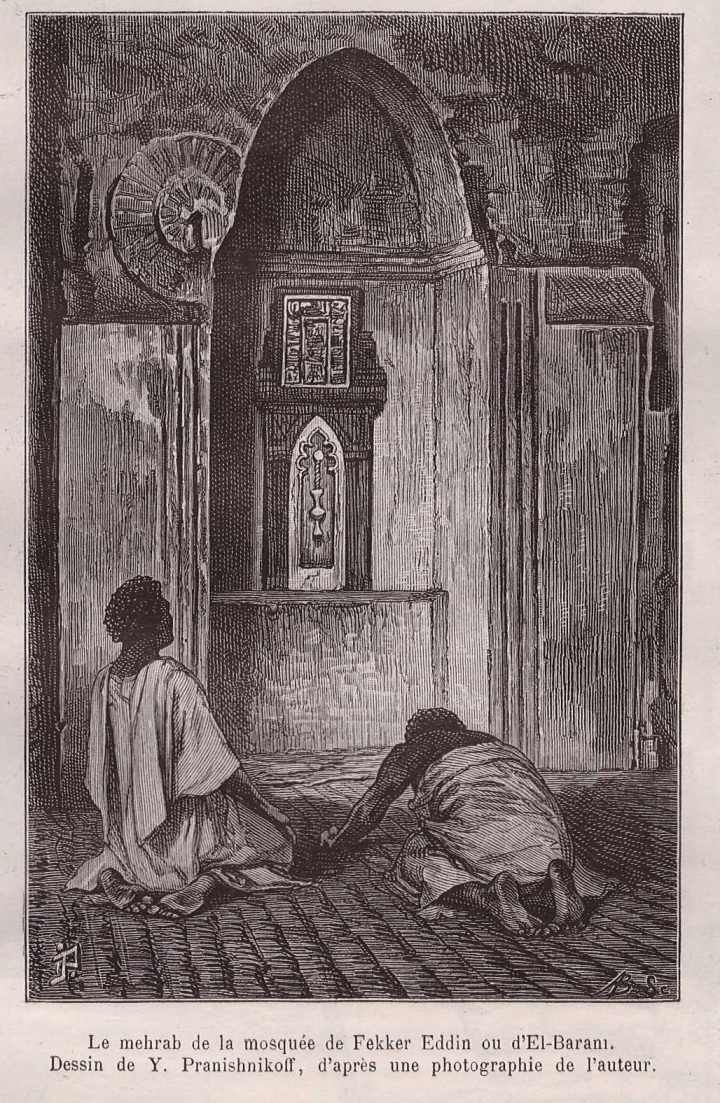
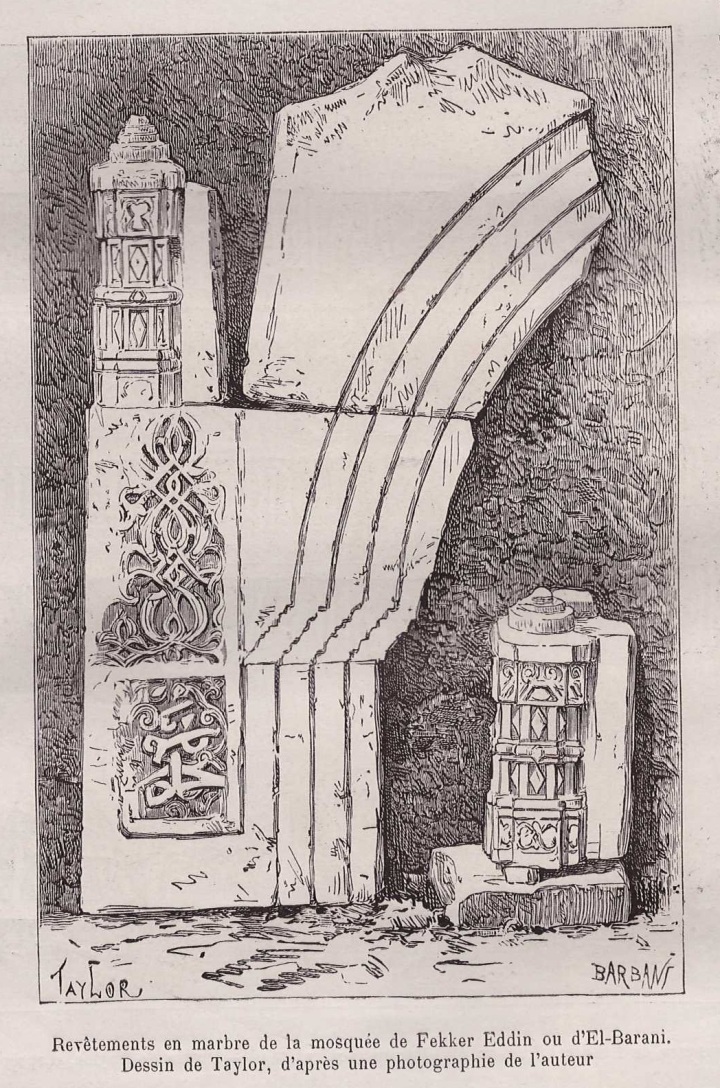
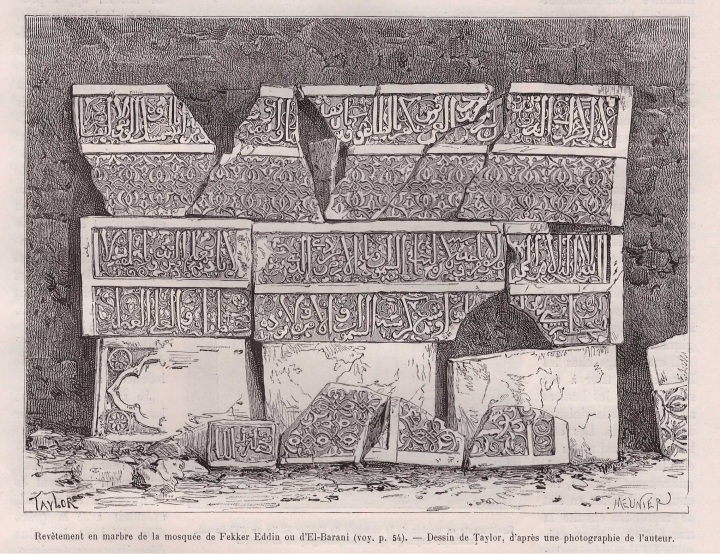
Lambourn, E.(1999) ‘The decoration of the Fakhr al-Dīn mosque in Mogadishu and other pieces of Gujarati marble carving on the East African coast‘, Azania: Archaeological Research in Africa, 34: 1, 61
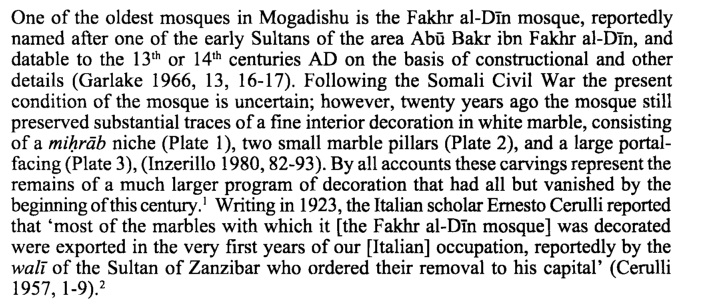
http://www.tandfonline.com/doi/abs/10.1080/00672709909511472
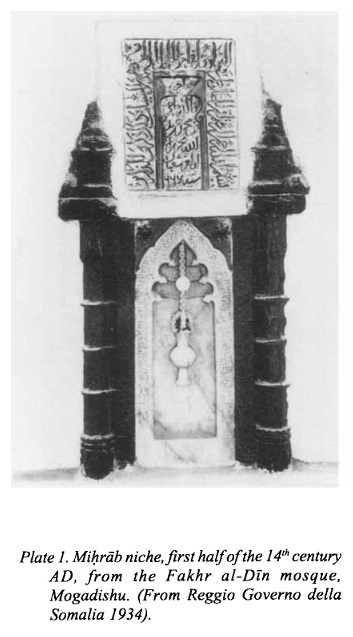
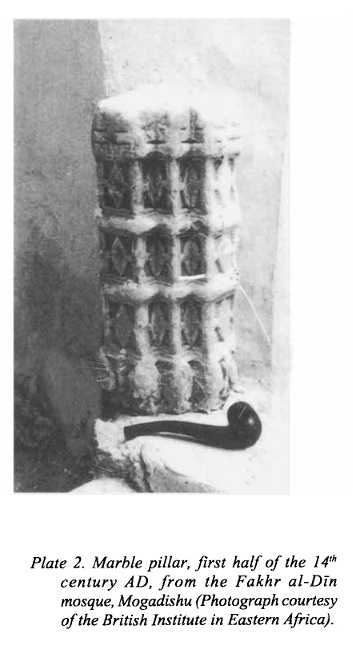
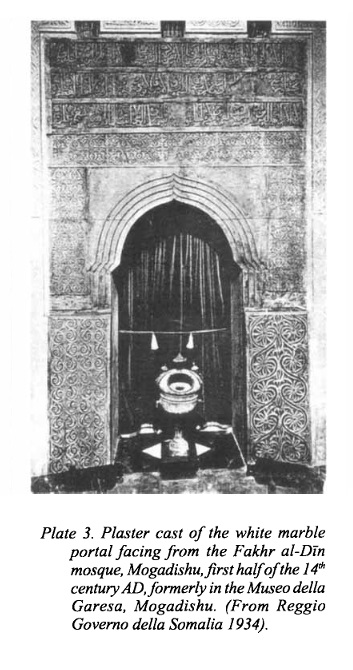
"
The mosque was built in 1269 by the first Sultan of the Sultanate of Mogadishu, Fakr ad-Din. Stone, including Indian marble and coral, were the primary materials used in the construction of the masjid. The structure displays a compact rectangular plan, with a domed mihrab axis. Glazed tiles were also used in the decoration of the mihrab, one of which bears a dated inscription.
Photographs of the Fakr ad-Din mosque feature in drawings and images of central Mogadishu from the late 19th century onwards. The mosque can be identified amidst other buildings by its two cones, one round and the other hexagonal."
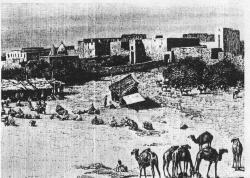
The Market Place in Mogadishu in 1882 with the Fakhr ad Din Mosque in the background.

